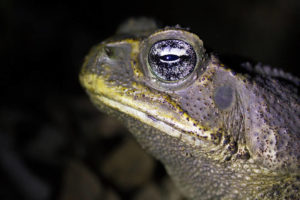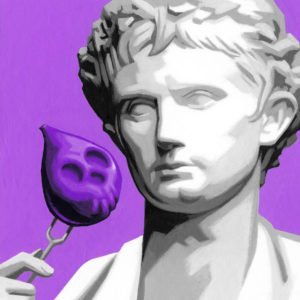From Japanese knotweed to cane toads, humans have introduced invasive species to new environments with disastrous results
The Wall Street Journal, November 1, 2018

Ever since Neolithic people wandered the earth, inadvertently bringing the mouse along for the ride, humans have been responsible for introducing animal and plant species into new environments. But problems can arise when a non-native species encounters no barriers to population growth, allowing it to rampage unchecked through the new habitat, overwhelming the ecosystem. On more than one occasion, humans have transplanted a species for what seemed like good reasons, only to find out too late that the consequences were disastrous.
One of the most famous examples is celebrating its 150th anniversary this year: the introduction of Japanese knotweed to the U.S. A highly aggressive plant, it can grow 15 feet high and has roots that spread up to 45 feet. Knotweed had already been a hit in Europe because of its pretty little white flowers, and, yes, its miraculous indestructibility.
First mentioned in botanical articles in 1868, knotweed was brought to New York by the Hogg brothers, James and Thomas, eminent American horticulturalists and among the earliest collectors of Japanese plants. Thanks to their extensive contacts, knotweed found a home in arboretums, botanical gardens and even Central Park. Not content with importing one of world’s most invasive shrubs, the Hoggs also introduced Americans to the wonders of kudzu, a dense vine that can grow a foot a day.
Impressed by the vigor of kudzu, agriculturalists recommended using these plants to provide animal fodder and prevent soil erosion. In the 1930s, the government was even paying Southern farmers $8 per acre to plant kudzu. Today it is known as the “vine that ate the South,” because of the way it covers huge tracts of land in a green blanket of death. And Japanese knotweed is still spreading, colonizing entire habitats from Mississippi to Alaska, where only the Arctic tundra holds it back from world domination.
Yet the lesson wasn’t learned. In the 1930s, scientists in both Australia and the U.S. decided to import the South American cane toad as a form of biowarfare against beetles that eat sugar cane. The experiment failed, and it turned out that the cane toad was poisonous to any predator that ate it. There’s also the matter of the 30,000 eggs it can lay at a time. Today, the cane toad can be found all over northern Australia and south Florida.
So is there anything we can do once an invasive species has taken up residence? The answer is yes, but it requires more than just fences, traps and pesticides; it means changing human incentives. Today, for instance, the voracious Indo-Pacific lionfish is gobbling up local fish in the west Atlantic, while the Asian carp threatens the ecosystem of the Great Lakes. There is only one solution: We must eat them, dear reader. These invasive fish can be grilled, fried or consumed as sashimi, and they taste delicious. Likewise, kudzu makes great salsa, and Japanese knotweed can be treated like rhubarb. Eat for America and save the environment.






